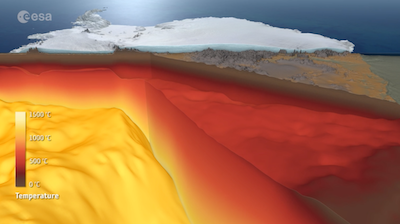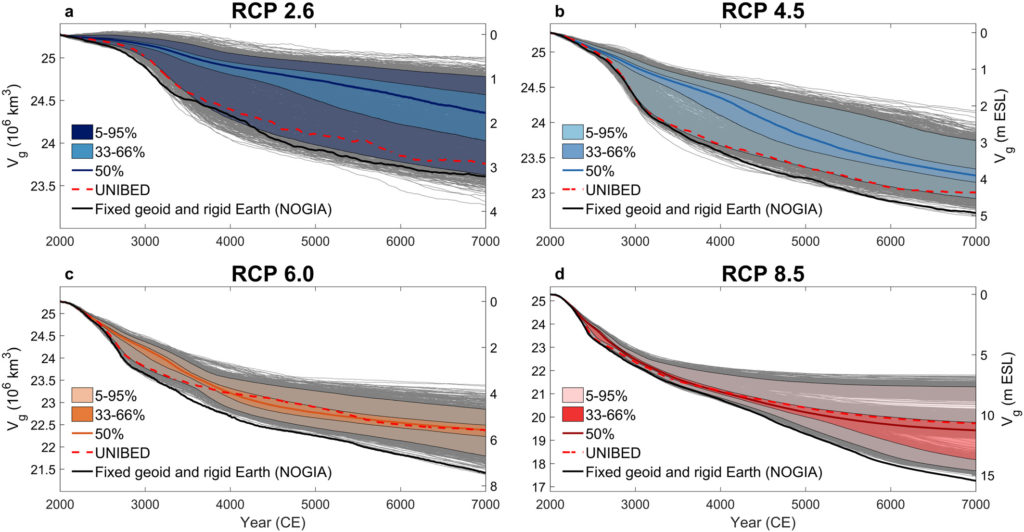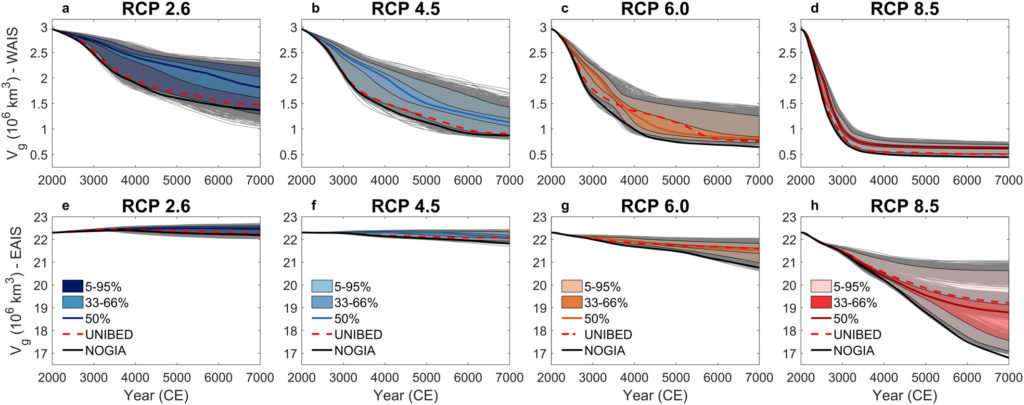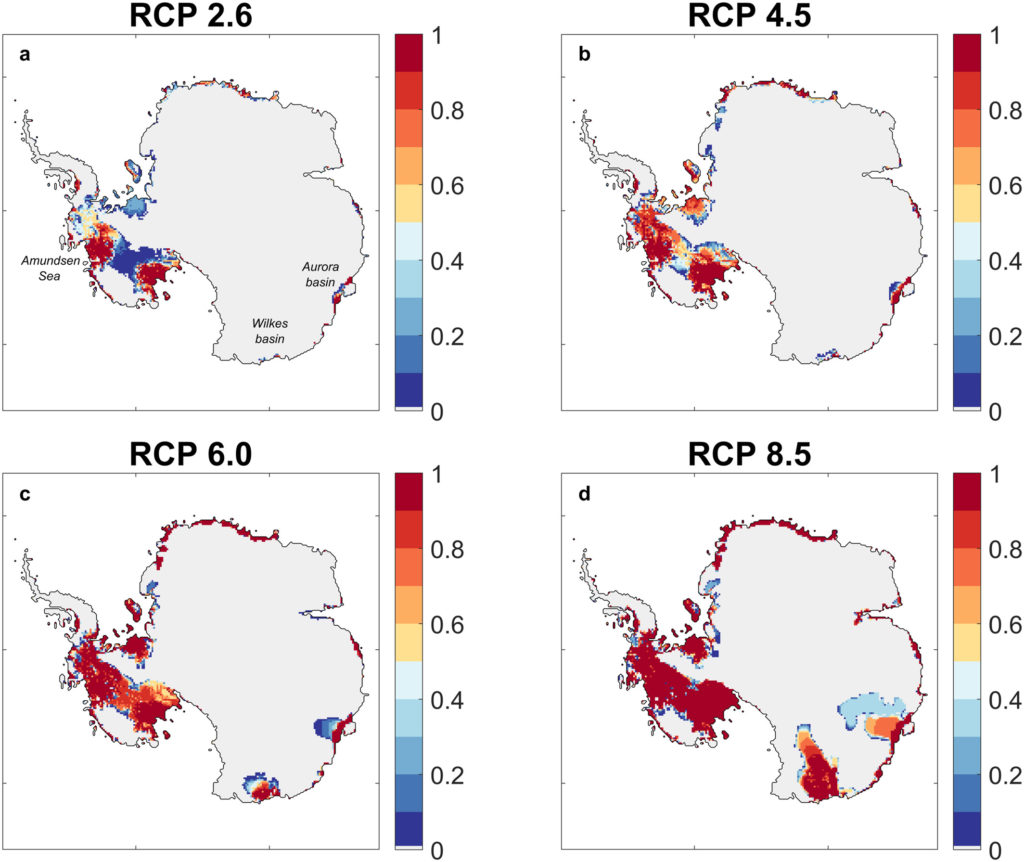
The article can be found here. Here are the main findings:
- When an ice sheet loses mass, the Earth surface rebounds. This process called Glacial Isostatic Adjustment is important to consider in ice sheet models because it can stabilise an ice sheet undergoing unstable retreat. Check this EGU blog.
- Most ice sheet models consider that the solid Earth response to ice mass changes is uniform. However, the isostatic rebound in West Antarctica has been shown to be much faster than previously thought!
- This study considers the contrast and the uncertainty in the isostatic response of the Antarctic solid Earth and shows that it plays a crucial role on the future evolution of the Antarctic Ice Sheet.
- Compared to simulations assuming a uniform solid Earth response, our ensemble of projections considering the contrast in the isostatic response of the Antarctic solid Earth show a stabilising effect, except under strong forcing at longer timescale.

- This is explained by the fact that in West Antarctica, the rapid Earth response significantly stabilises the ice sheet on multicentennial-to-millennial timescales, even though a collapse of the West Antarctic Ice Sheet cannot be avoided under high-emissions climate scenarios.

- In East Antarctica, the slow Earth response has an influence on longer timescales, potentially leading to an underestimation of future mass loss in the East Antarctic Ice Sheet.
- Because of this, the uncertainties in the future long-term Antarctic behaviour may be larger than previously thought, mainly arising from the Wilkes and Aurora marine basins in East Antarctica.


Leave a Reply